Thanksgiving is over, but dont let that turkey carcass go to waste! Make homemade turkey broth.
If you have any extra broth, it can be frozen or canned using a pressure canner.
Hey there, fellow food enthusiasts! Are you looking for ways to maximize the deliciousness of your Thanksgiving turkey? Look no further than this comprehensive guide on how to can turkey bone broth It’s a fantastic way to transform leftover turkey bones into a flavorful, versatile broth that can be used in countless recipes throughout the year.
Why Can Turkey Bone Broth?
Canning turkey bone broth is a fantastic way to preserve the essence of your Thanksgiving feast. It’s a sustainable practice that allows you to enjoy the rich flavors of the turkey long after the holiday has passed. Plus homemade bone broth is packed with nutrients and collagen, making it a healthy and delicious addition to your diet.
Step-by-Step Canning Instructions:
1. Gather Your Supplies:
- Pressure canner
- Canning jars (pint or quart size)
- Canning lids and bands
- Large stockpot
- Ladle
- Funnel
- Jar lifter
- Clean kitchen towels
2. Prepare the Turkey Bones:
- After enjoying your Thanksgiving feast, remove all the usable meat from the turkey carcass.
- Break apart the bones and layer them in a large roasting pan.
- Scatter chopped vegetables like onions, carrots, and celery over the bones.
- Add the drippings, vegetables, skin, fat, and remaining bits from the bottom of the roasting pan to a large stockpot.
3. Roast the Bones and Vegetables:
- Preheat your oven to 350°F (175°C).
- Roast the bones and vegetables for 30-45 minutes, or until the bones are browned.
- Transfer the roasted bones and vegetables to the stockpot.
4. Make the Turkey Stock:
- Add 1 cup of water to the roasting pan to deglaze it.
- Scrape the pan with a wooden spoon to release the flavorful brown bits.
- Pour the liquid into the stockpot.
- Add herbs, black peppercorns, and enough water to cover the bones by 1-2 inches.
- Bring the stock to a boil, then reduce heat and simmer for at least 2 hours.
5. Strain and Chill the Stock:
- Let the stock cool slightly, then remove the larger bones and strain the stock through a fine-mesh sieve into a large container.
- Discard the bones and solids.
- Let the stock cool completely and then refrigerate overnight.
- Once chilled, the fat will rise to the top. Skim and discard the fat.
6. Prepare the Canning Jars:
- Wash the canning jars, lids, and bands in hot soapy water and rinse well.
- Set the lids and bands aside to air dry until you are ready to use them.
- Place the pressure canner on the stove and insert the canning rack.
- Add water per your pressure canner manufacturer’s instructions.
- Fill the jars about halfway with hot water and place them on the rack in the canner.
- Bring the canner to a simmer for 10 minutes (180°F).
- Keep warm until you are ready to fill them.
7. Can the Turkey Bone Broth:
- Remove the chilled stock from the refrigerator.
- Add the stock to a large stockpot and bring it to a boil over medium-high heat.
- Place a dry towel on the counter.
- Use your jar lifter to remove a jar from the canner.
- Pour out the water and place the jar on the towel.
- Keep the remaining jars in the canner so they stay hot.
- Place the canning funnel on the jar and fill the jar with hot stock, leaving a 1-inch headspace.
- Run the bubble popper through the jar to release trapped air bubbles.
- Wipe the rim of the jar with a damp towel to remove any residue.
- Center a lid on the jar, place the band over the lid, and screw it on until fingertip tight.
- Immediately place the jar back into the canner and repeat with the rest of the jars.
- Bring the canner to a boil over medium-high heat.
- Follow the directions for your pressure canner and process the jars for the times indicated in the recipe below.
8. Cool and Store the Canned Turkey Bone Broth:
- When the processing time is complete, turn off the heat and let the canner cool naturally.
- Remove the jars and let them cool completely.
- Date, label, and store in a cool location for 12 to 18 months.
Tips and Tricks:
- Consider freezing the turkey bone broth in ice cube trays for convenient portion sizes.
- Use turkey bone broth in soups, stews, sauces, gravies, and even rice dishes for added flavor and nutrition.
- Get creative! Experiment with different herbs and spices to create unique flavor profiles in your turkey bone broth.
Additional Resources:
- For more detailed instructions on pressure canning, refer to the National Center for Home Food Preservation website.
- Check out the Penn State Extension guide on “Preserving Food at Home” for additional tips and recipes.
Enjoy the Delicious Rewards of Canning Turkey Bone Broth!
By following these simple steps, you can transform your leftover turkey bones into a flavorful, versatile broth that will add a touch of Thanksgiving magic to your meals all year round. So, get canning and savor the delicious rewards of this sustainable and rewarding practice!
Step by step directions
- Place bones and carcass in a roasting pan. Bake for 30 to 45 minutes, or until nicely browned, at 350°F.
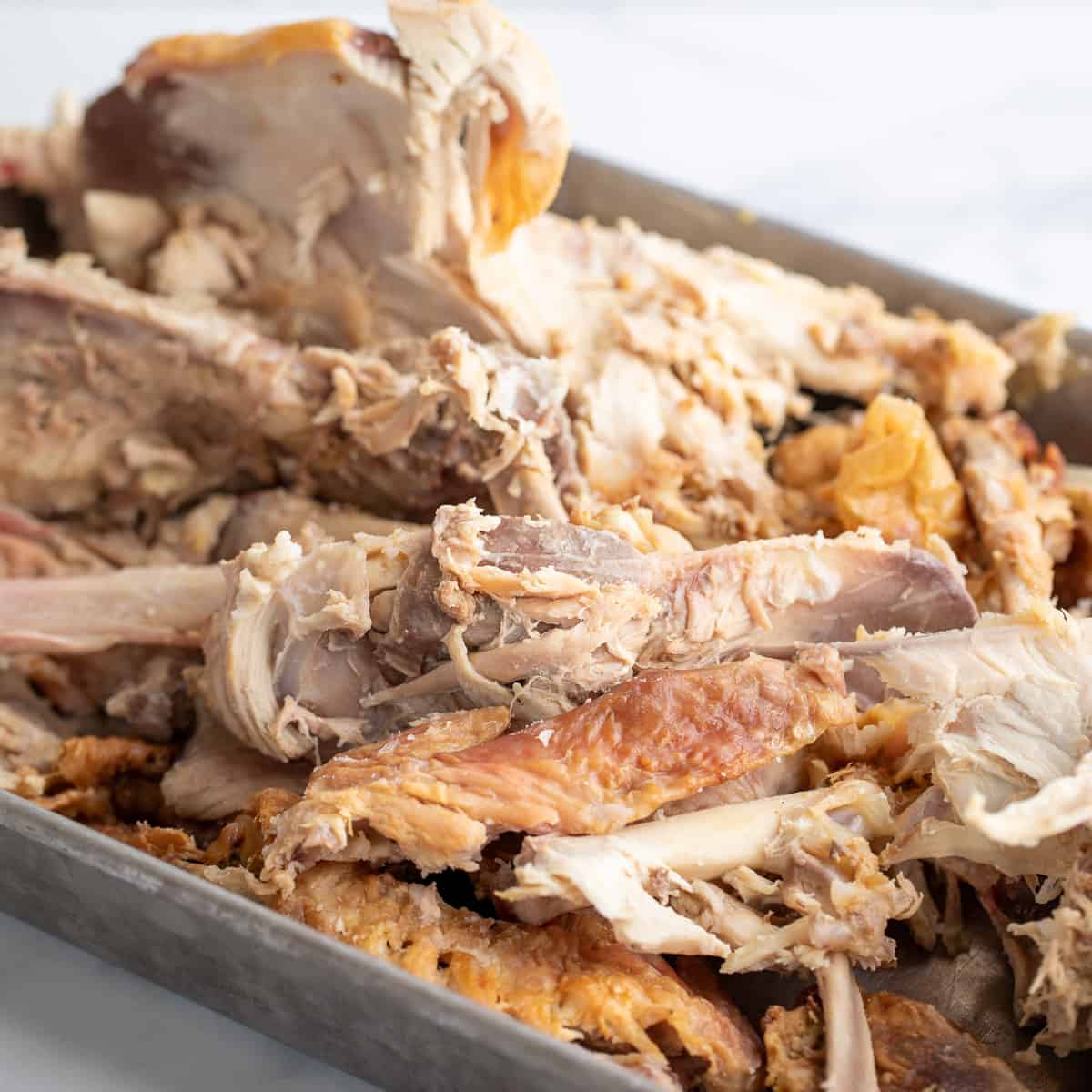
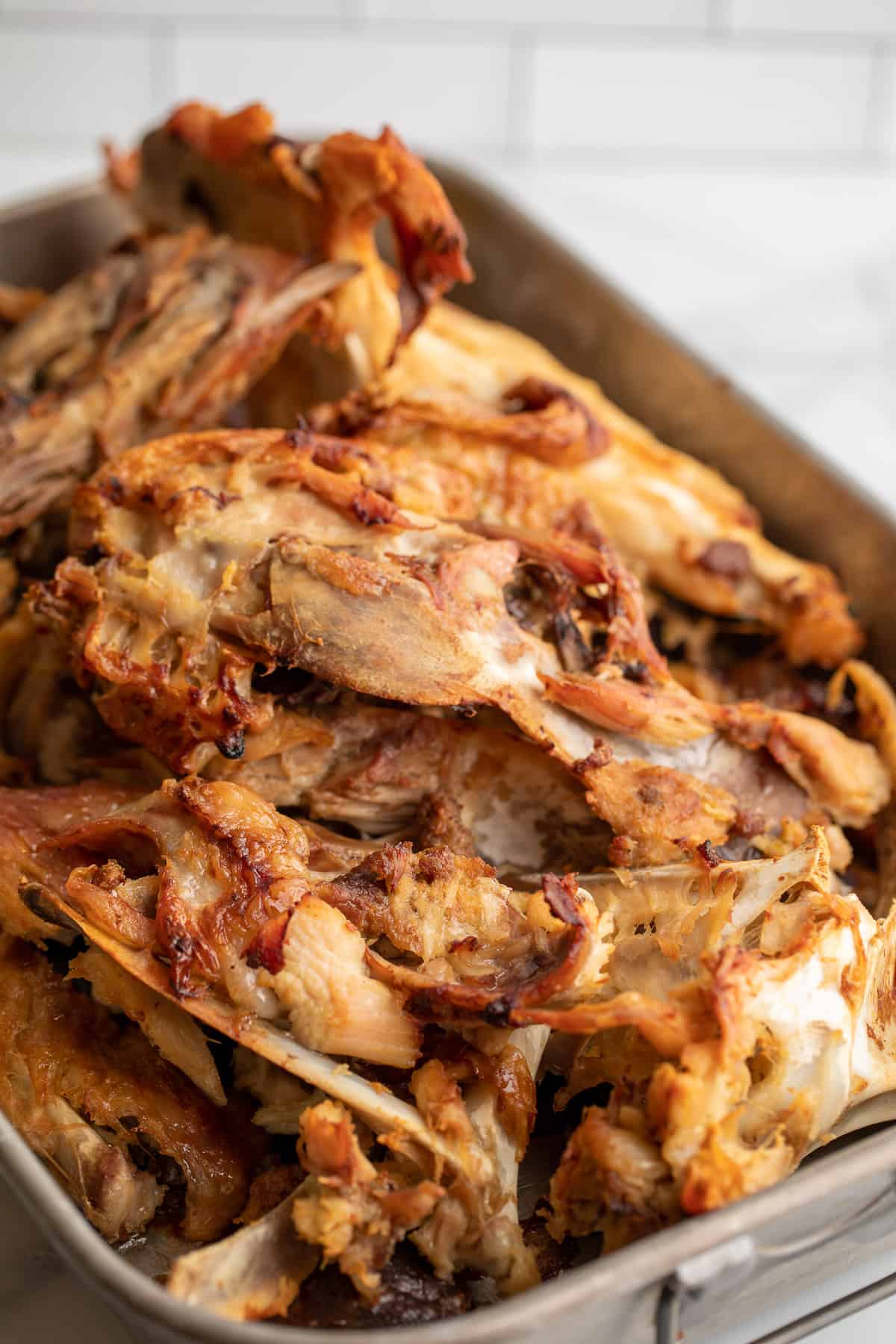
- Add all of the ingredients—including the roasted turkey bones—to a large stockpot.
- Fill pot with cool water
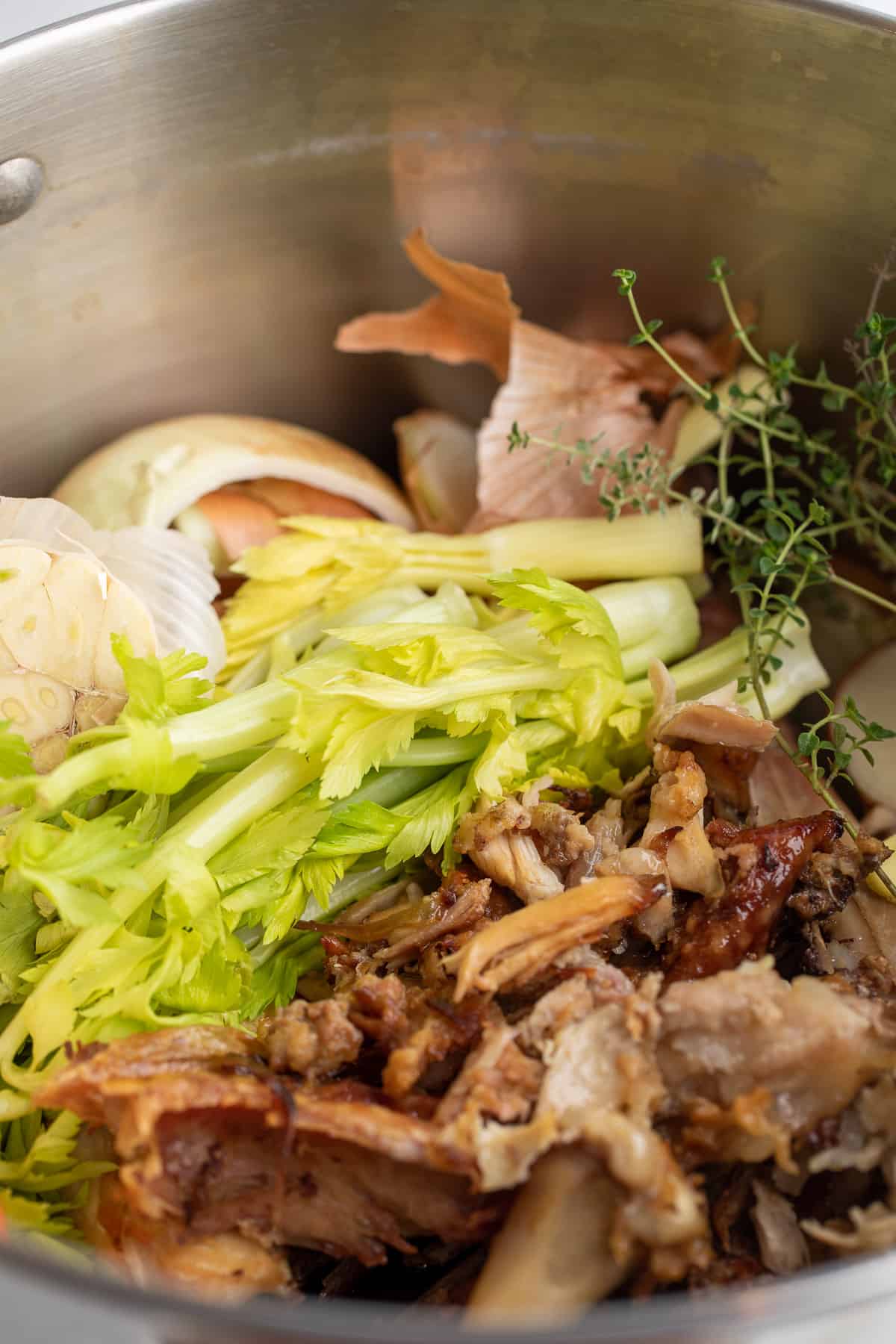
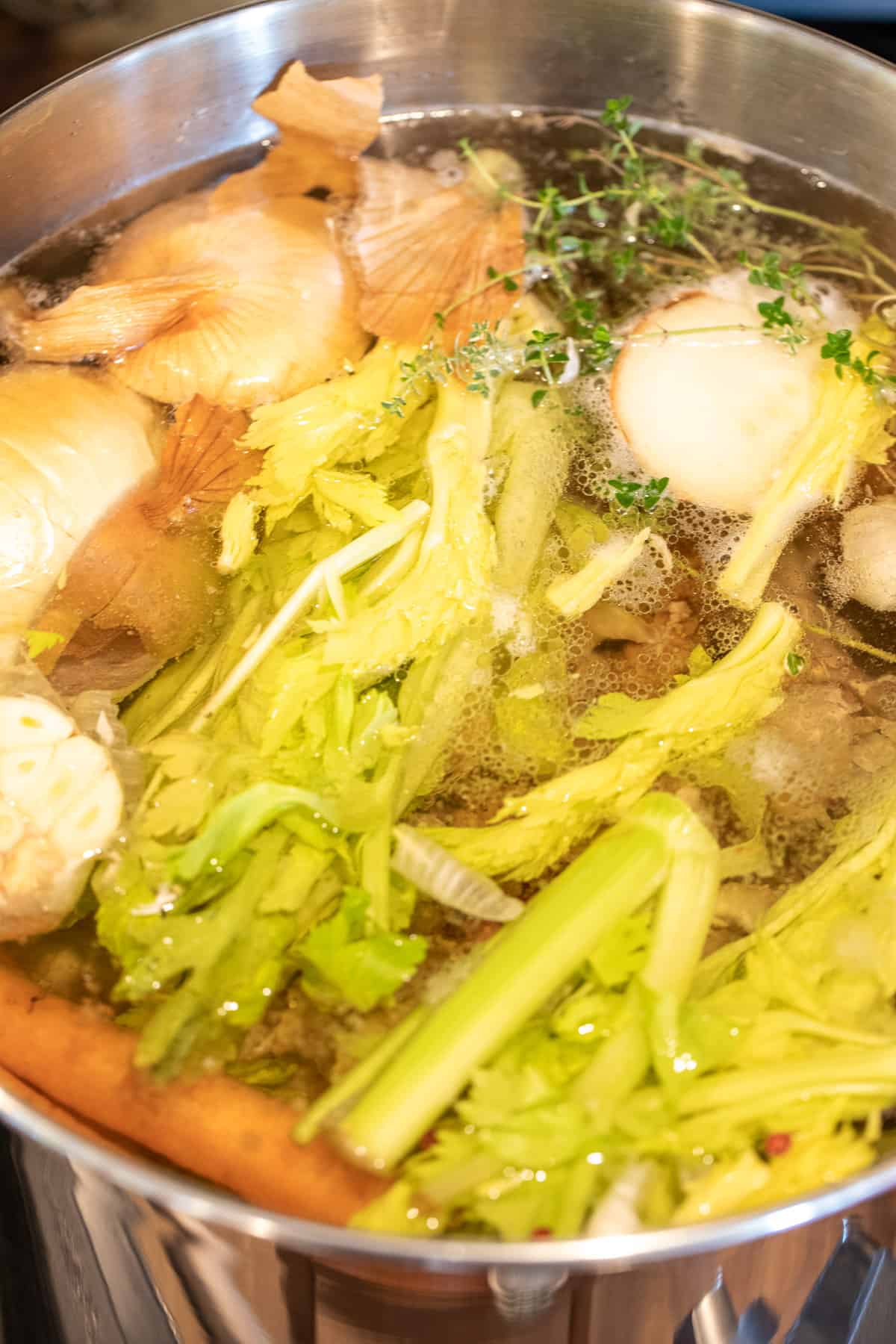
- Heat over low heat until it comes to a simmer
- Simmer for 4-8 hours. If water runs too low, replace it with hot water.
- Remove large bones and strain stock. Scrape off any fat that rises to the top after letting it cool in the refrigerator.
- The remaining broth can be pressure canned, frozen, or used within three to five days.
- This recipe is very forgiving. Just add what you have and don’t stress too much about the quantities of each ingredient.
- Try not to boil as you simmer it over low heat; just let it simmer.
- You can simmer anywhere between 4-8 hours. The longer you cook it, the richer the broth becomes.
- Keep the bones covered with water. If needed add additional hot water throughout cooking time.
- If you prefer your broth to be extremely clear, strain it twice: once using a fine-mesh strainer and once using a colander. Usually, I only strain once, so the broth still contains some small particles.
Turkey broth is excellent used in soups or gravies. You can use turkey stock in any recipe calling for chicken stock or broth.
The terms broth and stock are often used interchangeably. Stock is traditionally made with bones while the broth is usually made from bones and meat. Both broth and stock can be used in the same manner.
If you make a large pot of turkey broth, youll probably end up with extra broth. Freezing the broth is a great way to preserve it.
- Choose freezer safe containers
- Leave a tiny bit of headspace to allow the frozen broth to swell.
- Label contents and date
- Freeze for up to a year
- To use, simply thaw and add to a recipe
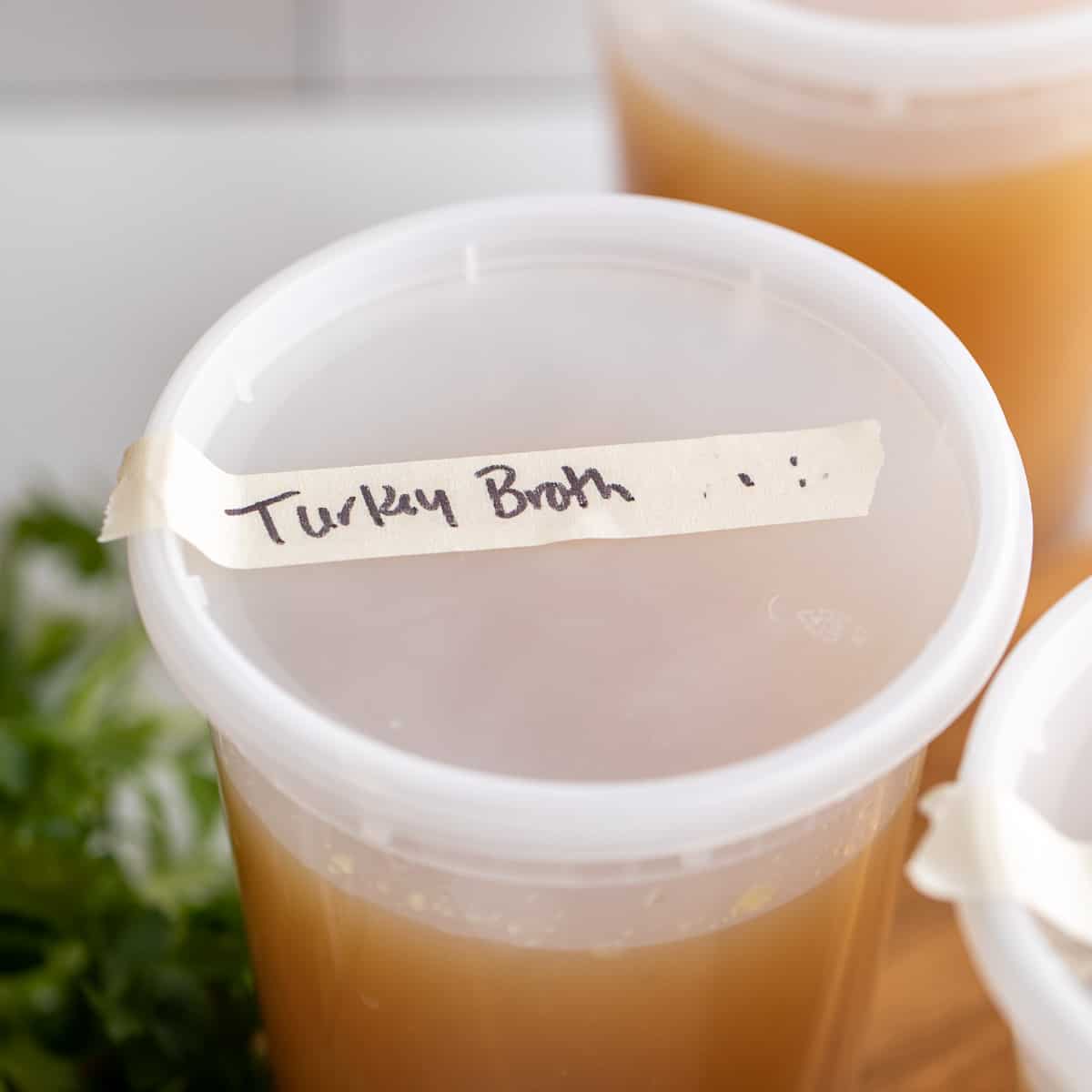
Stock made with turkey bones
Theres nothing better than using every bit of the turkey. After all the meat has been carved off, save the carcass; it makes a delicious stock or broth.
When I make chicken stock, I usually start with raw chicken, but fully cooked chicken or turkey also works well. The process is very similar, but I make a few changes to how I normally make broth.
One change I like to do is to roast the bones. It just adds another layer of flavor.
I like to throw a lot of ingredients into a large pot, simmer it for the entire day, and then freeze it for use at a later time or to make soups like this one with turkey tortillas and turkey barleys.
Often, I will also pour the turkey stock into jars and process it in a pressure canner to preserve it.
It really doesn’t take much work to make an extra large pot, but how much you make is totally up to you.
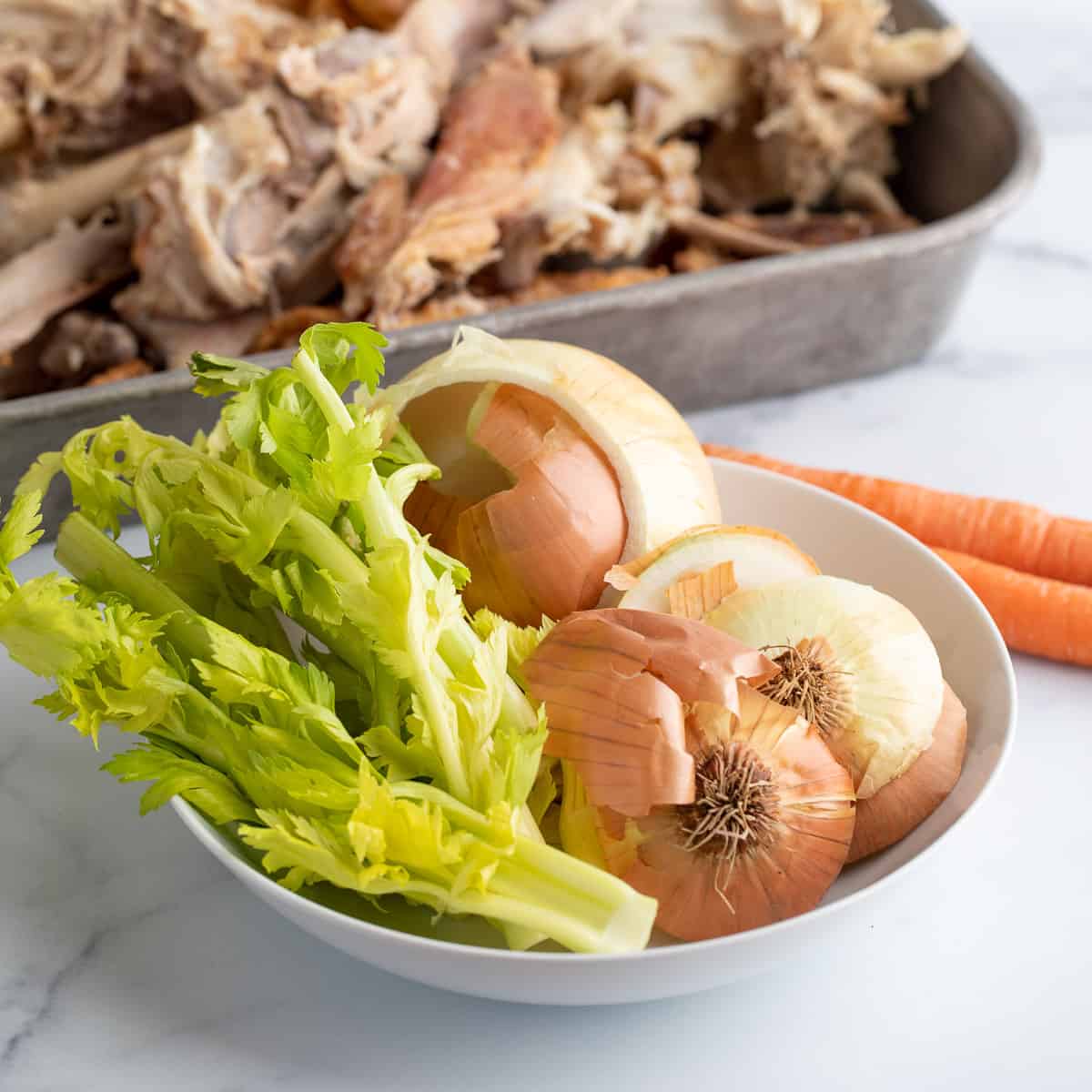
- Turkey Bones – Use the whole carcass, legs, and wings. Its okay to have some meat left on the bones. I also use any small pieces and any skin that is left over.
- Use the whole onion or just the peel and any parts that are removed.
- Garlic – Youll use a whole head of garlic. I like to slice it in half through the center .
- Celery: Use a few celery stalks or the tops.
- Carrots – Whole carrots. No need to peel them, just wash them well.
- Seasonings include bay leaves, optional red and black peppercorns, fresh thyme, and fresh parsley.
Save a bag with leftover onion skins and ends and celery tops. I save the extras from Thanksgiving stuffing and store them in a bag in the refrigerator until I’m ready to make turkey stock.
How to Make Roast Turkey Bone Broth on the Stove Top – Turkey Bone Broth Recipe
FAQ
Can homemade bone broth be canned?
How to can bone broth in mason jars?
Do you have to cook turkey before canning it?
What can I cook with turkey bone broth?
Grains: Add a punch of flavor to grains like rice, quinoa, buckwheat, and couscous by cooking them in broth instead of water. Stuffing: Use the broth to make your Thanksgiving or Christmas day stuffing. This turkey bone broth recipe is perfect for batch cooking and storing or freezing for later.
Does bone broth help with a broken bone?
If one’s diet is deficient in minerals relative to bone health, then yes. However, eating a balanced dietary pattern will likely ensure adequate minerals, as well as protein, are consumed which are important for the healing process. Since bone broth contains several minerals, it may be helpful to fill nutrient gaps in one’s diet and, thus, help with healing a broken bone. However, ensuring adequate calorie, protein, and micronutrient intake is essential for supporting healing. Bone broth is low in protein and calories.
Can you make bone broth from turkey carcass?
When the turkey carcass is picked over, you already have everything prepped for stock. If you’re not making it right away, store the bones in a sealed container in the freezer until you’re ready to make the stock. Here are three different ways to make bone broth. Each method is simple and makes a delicious stock.
Is turkey bone broth good for You?
It’s nutritious. Turkey bone broth is rich in gelatin and amino acids such as proline, glycine, and glutamine. Leftover turkey bones give the broth its flavor, substance, and nutrition. They’re an excellent source of collagen, which breaks down to protein-rich gelatin. White wine adds acidity to the broth and improves its flavor.
